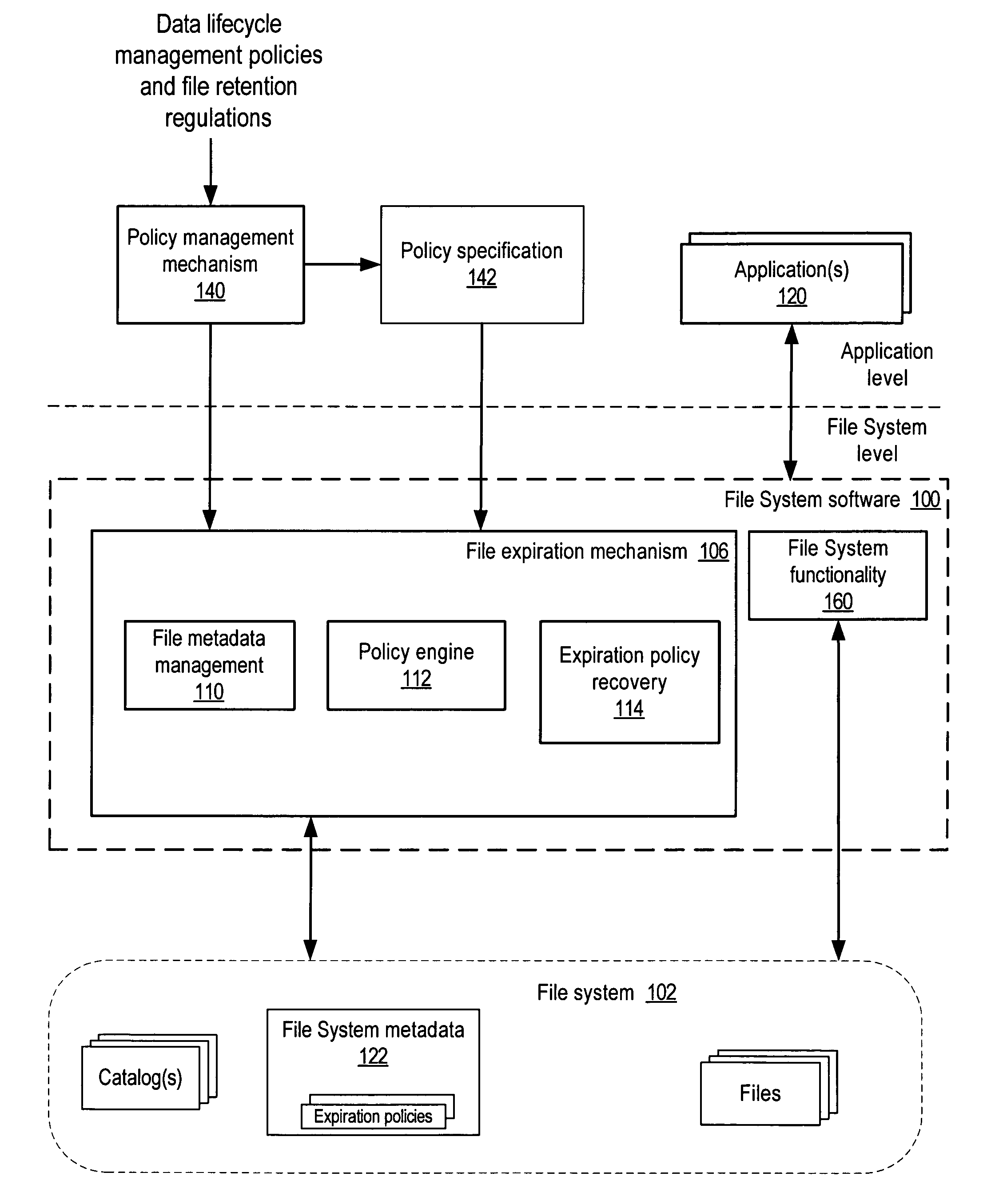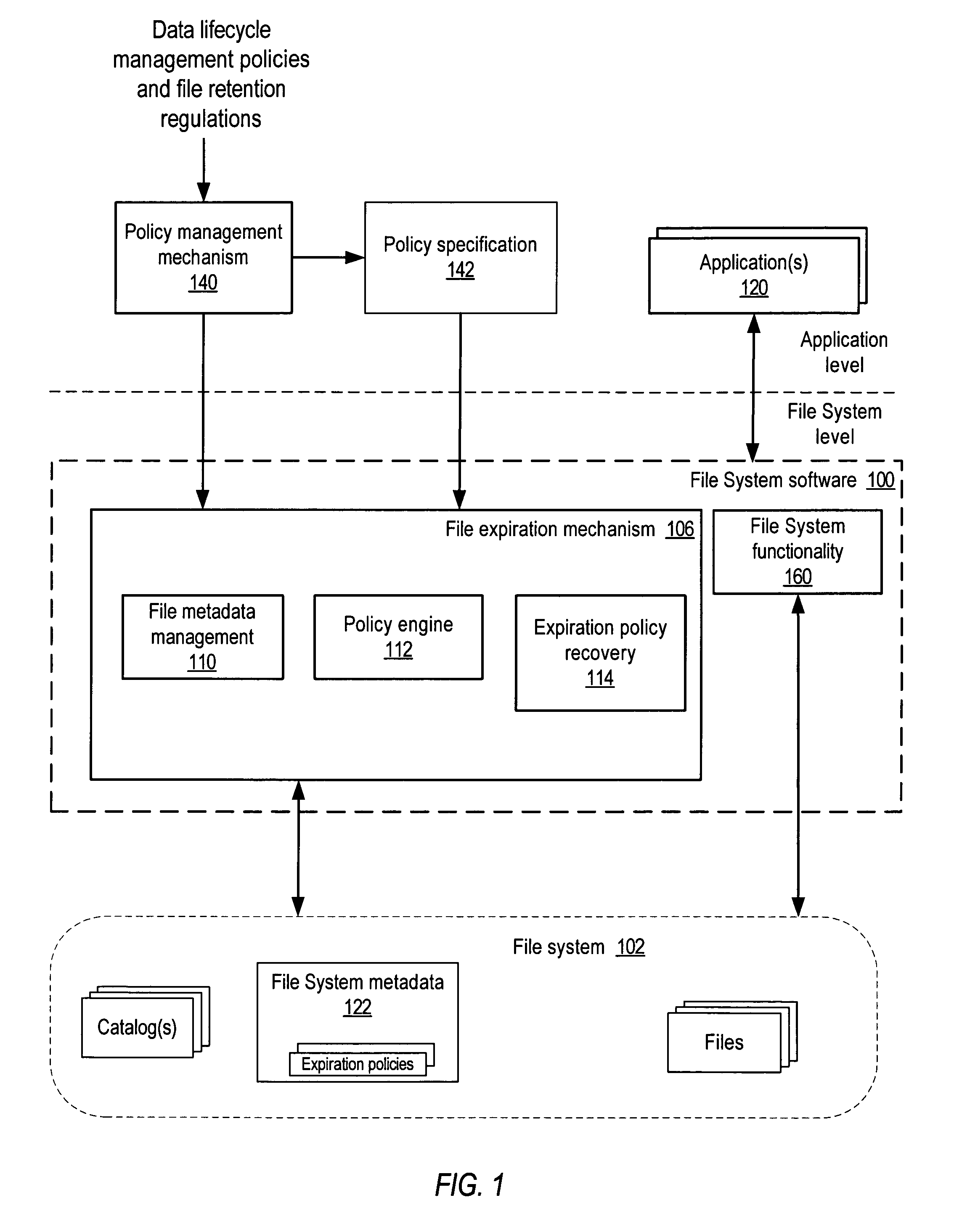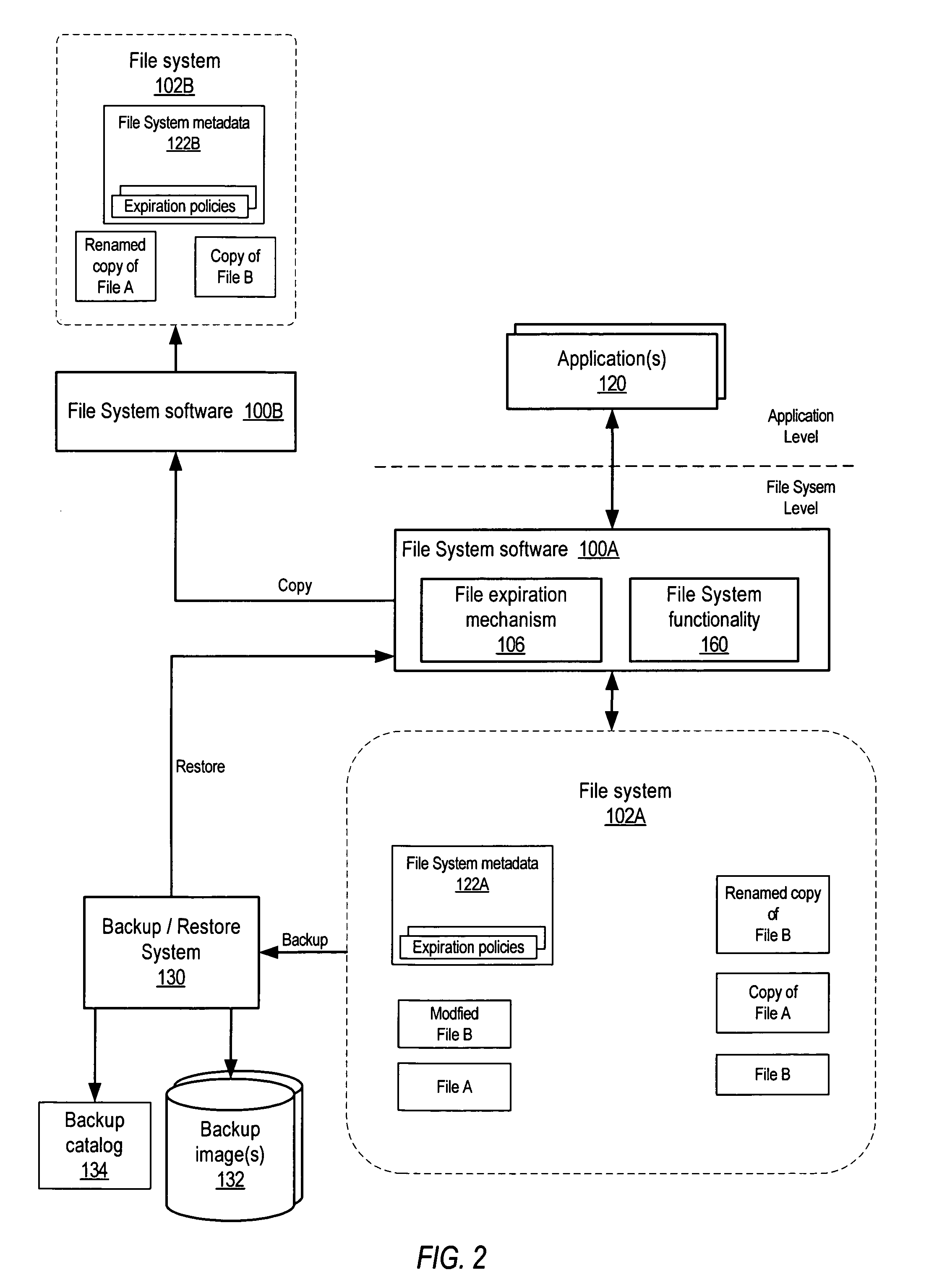System and method for policy-based data lifecycle management
a data lifecycle management and policy-based technology, applied in the field of computer systems, can solve the problems of deleting all copies of files, difficult to manage files and copies of files in a network of file systems across arbitrary machines, and deleting all copies
- Summary
- Abstract
- Description
- Claims
- Application Information
AI Technical Summary
Benefits of technology
Problems solved by technology
Method used
Image
Examples
Embodiment Construction
[0025]Embodiments of a system and method for the policy-based lifecycle management of data in file systems are described. Part of the process of lifecycle management of data is ensuring that all copies of expired data (files) are deleted. Embodiments may provide a policy-based automatic mechanism for the deletion of expired documents (files) in a file system. In embodiments, a mechanism for the policy-based lifecycle management of files in a file system (referred to herein as a data lifecycle management mechanism) may ensure that lifecycle-managed files are deleted or otherwise properly handled on or after their respective expiration dates. In embodiments, a file expiration date that corresponds to the expiration date for the file may be made an immutable attribute of the file system metadata maintained for files in the file system by the file system software, and the file system software itself, or alternatively another mechanism such as a driver at the file system level and not th...
PUM
 Login to View More
Login to View More Abstract
Description
Claims
Application Information
 Login to View More
Login to View More - R&D
- Intellectual Property
- Life Sciences
- Materials
- Tech Scout
- Unparalleled Data Quality
- Higher Quality Content
- 60% Fewer Hallucinations
Browse by: Latest US Patents, China's latest patents, Technical Efficacy Thesaurus, Application Domain, Technology Topic, Popular Technical Reports.
© 2025 PatSnap. All rights reserved.Legal|Privacy policy|Modern Slavery Act Transparency Statement|Sitemap|About US| Contact US: help@patsnap.com



